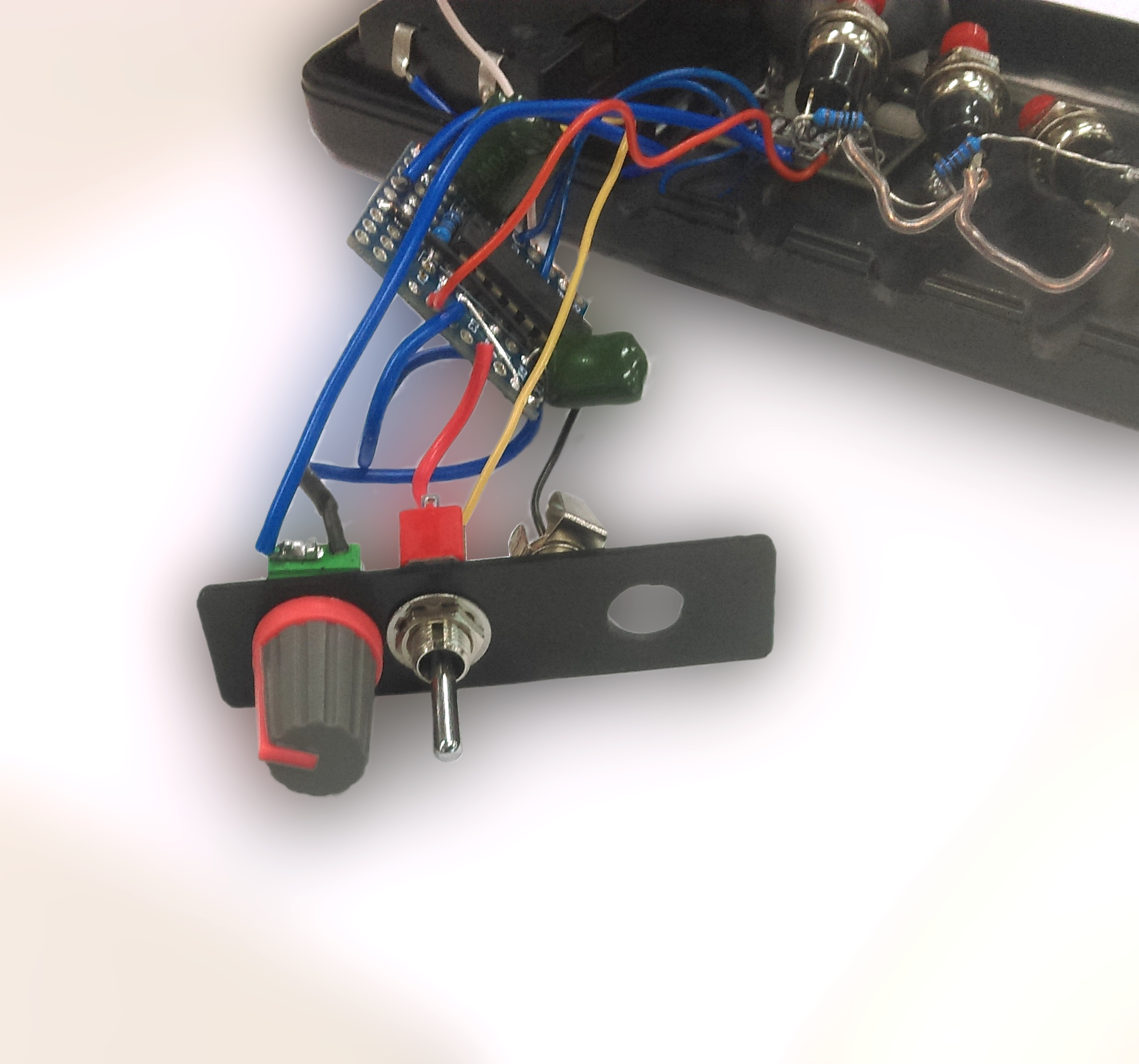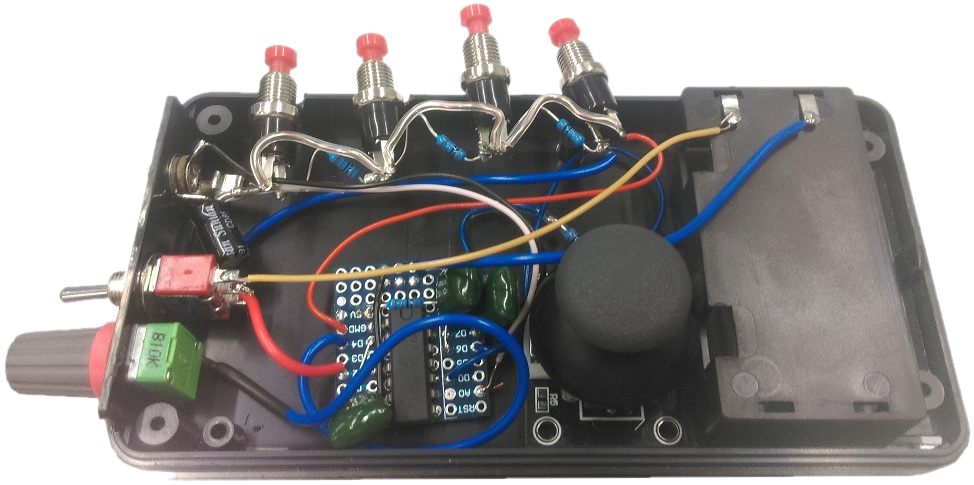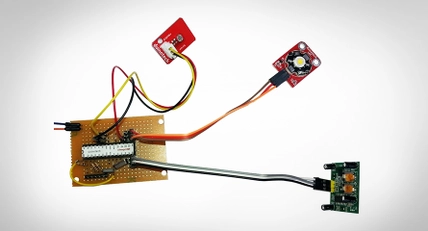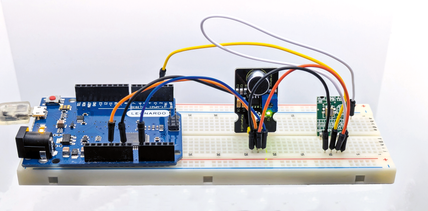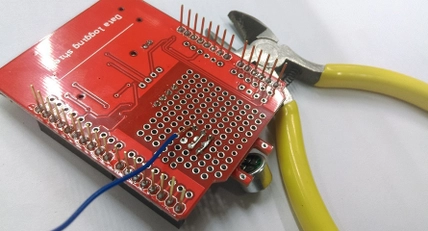Below are some sections of the build. You can see that we've used heat shrink for some joins, which isn't entirely needed but it is a good idea in small spaces, as accidental shorts can sometimes be hard to find and will stop the audio from coming through completely.
First task is to assemble the button configurations, these are fairly easy as you're making a bit of a ladder design across all the buttons. Make sure that all of the resistors are on one side of the buttons, and the other side is all joined up, then put the potentiometer on one end of the wire, like the below picture.
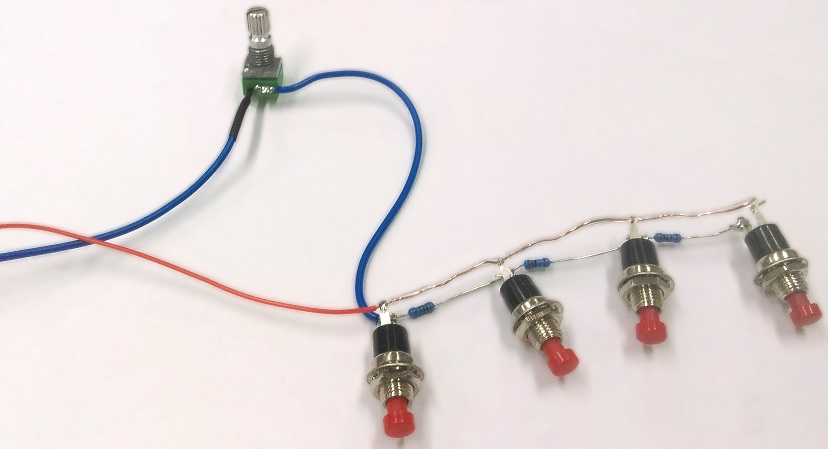
In the schematic, I have one extra resistor (R3) that can be put anywhere along this loop, as it is unaffected by the buttons, and will help give the noise a higher-pitched sound.
We can also set the electrolytic pot (RL6428) close to the socket and solder it in place, so that the negative strip is the final output to the phones, and ground the other side.
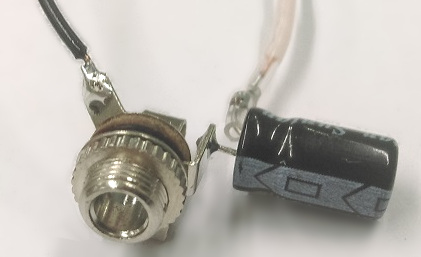
The Joystick module is easy enough to do, as there's only one in and out going through the device. Simply add one resistor inline with one of the X or Y outputs, and solder a wire on +5V / VCC.
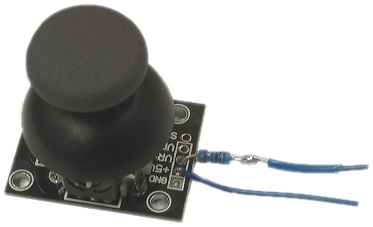
The internal workings of the joystick allows for some interesting type of configurations. For instance, it would be possible to allow both the X and Y directions to modify different aspects of the synth, but for now we'll only use the X direction.
The case is matter of preference, as to where exactly you want the buttons, but a good way of laying out the positioning is by placing the case in your hand and marking with a pencil where the drill holes should go.
The joystick hole is a 23mm diameter hole, about 51mm up and 13mm in from the outside bevel lower edge, like below.
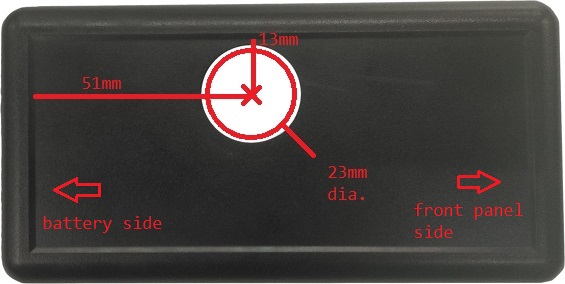
Put the two halves of the case together and drill 7mm holes along where the buttons are meant to go. Having the two halves together helps with drilling out both sides evenly and the buttons line up along the middle of the case.
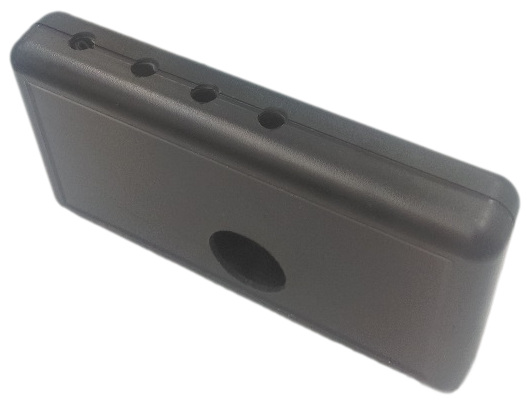
It might also be helpful to trim the underside edge of the joystick cutout, and to cut away the PCB mounts (as we are not using them to support our PCBs.) Check the fit of the joystick mounting below before trimming away too much of the joystick cutout. The aim is to have the joystick move freely but not provide a massive gap into the case.
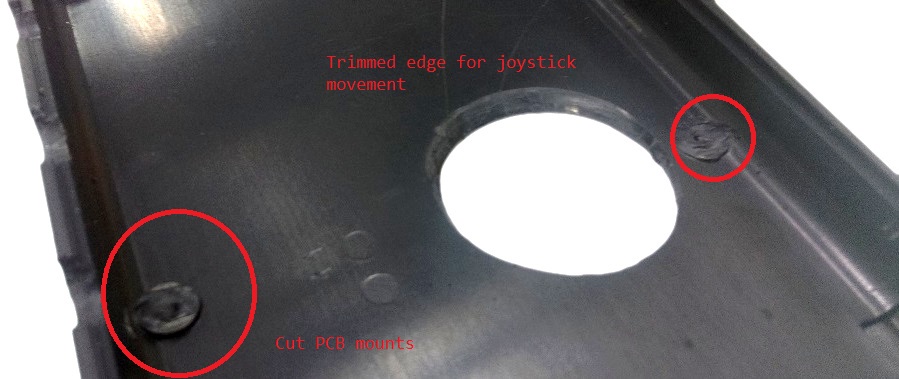
The general layout for the PCB, according to the schematic above, looks something like this:
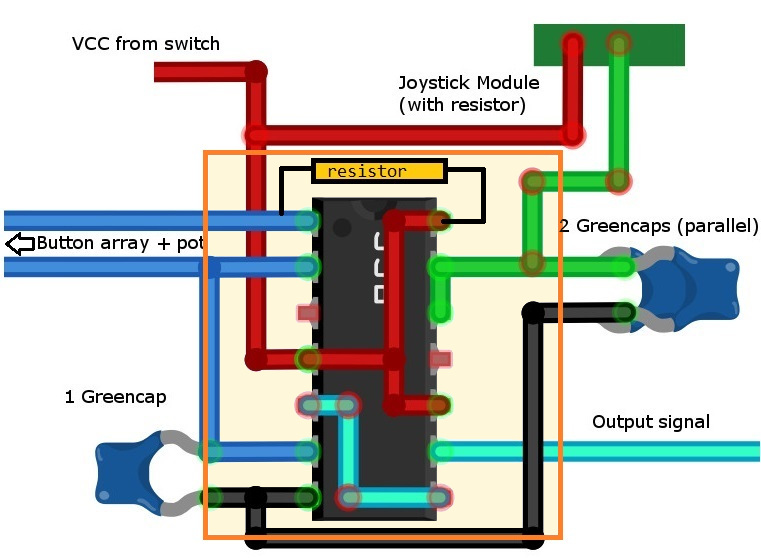
Anything not immediately close to the chip is on a set of wires, as the prototyping PCB board we have is fairly small. There's a resister bridging over the top of the chip, that pulls pin 1 high, so we bridge it over to pin 14, which is the chip VCC.
There's a few connections that connect to both sides of the chip, such as the line going from pin 5 to 8, and the 4-10-14 connections. These are best done on the reverse side of the PCB (Remember, reverse, double check pin layouts.)
Here is a picture of our board once we soldered it together and wired it up
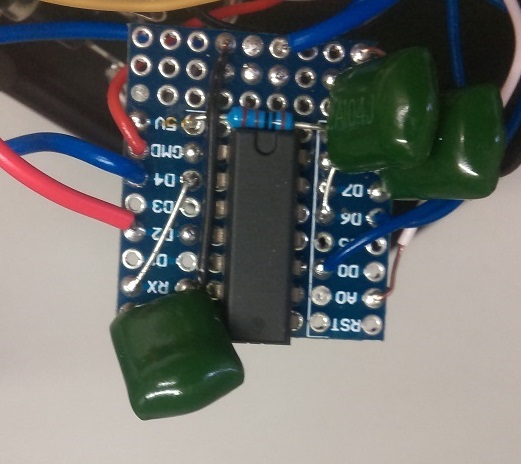
Notice the orientation on the board and the chip. Due to the size of it being so small and tight, it's difficult to show the layout on the physical board.
The only bit of importance in positioning the parts inside the unit, is the position of the joystick. We've found the best way to position it is to (firstly, snip any pcb mounts in the way, then) place the corner of the joystick module so it sits just flush near the battery component tab. Make sure that you do leave plenty of room for the battery tab to slide in and out.
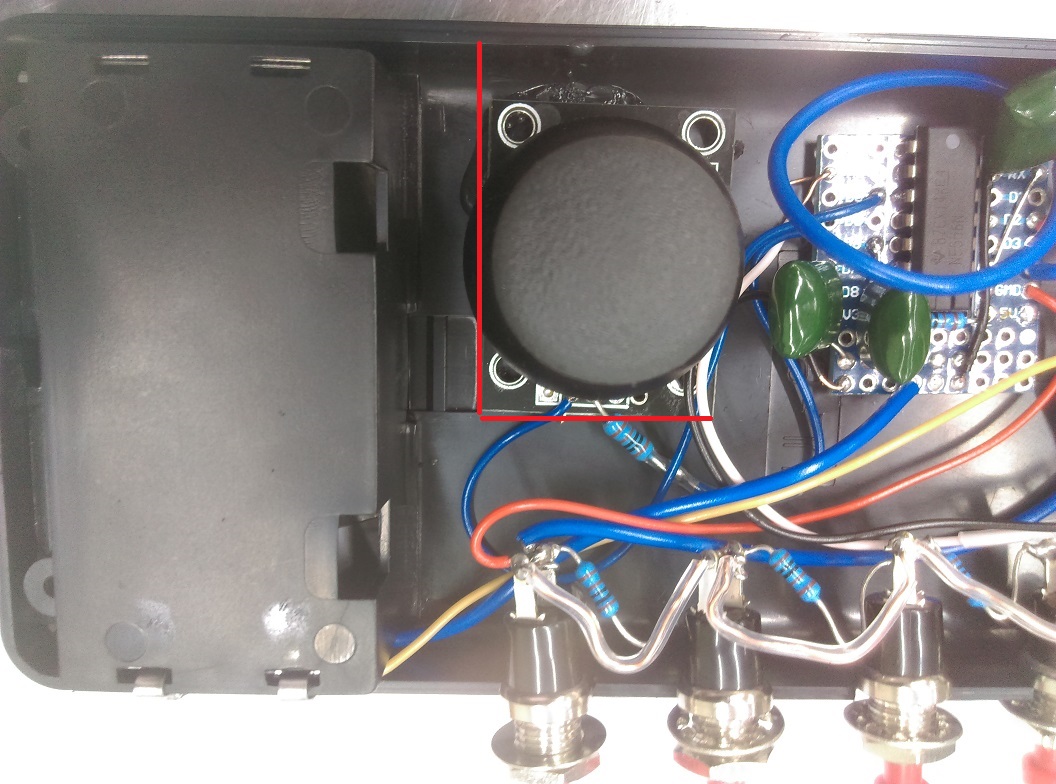
Hot glue that in and make sure that the top case fits over, so the joystick cut out has plenty of room to move around freely.
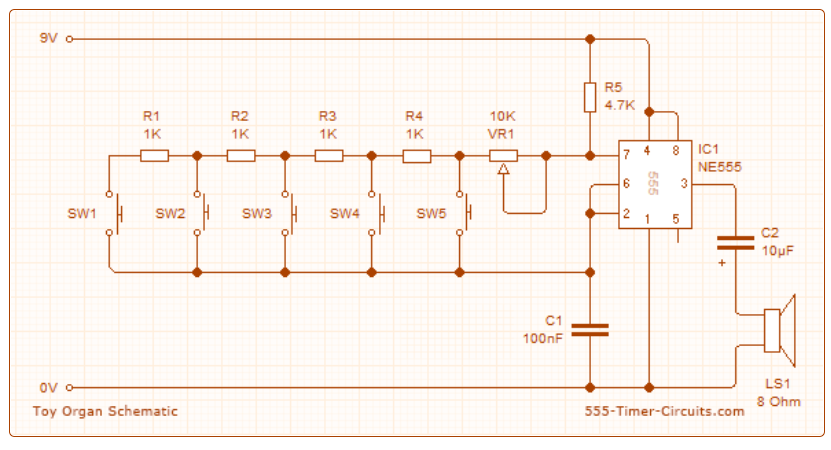
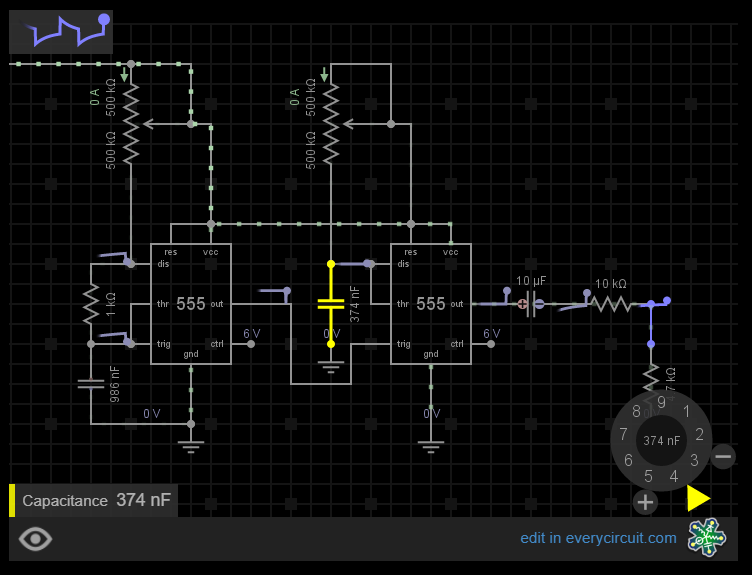
.png?branch=uat_new)









